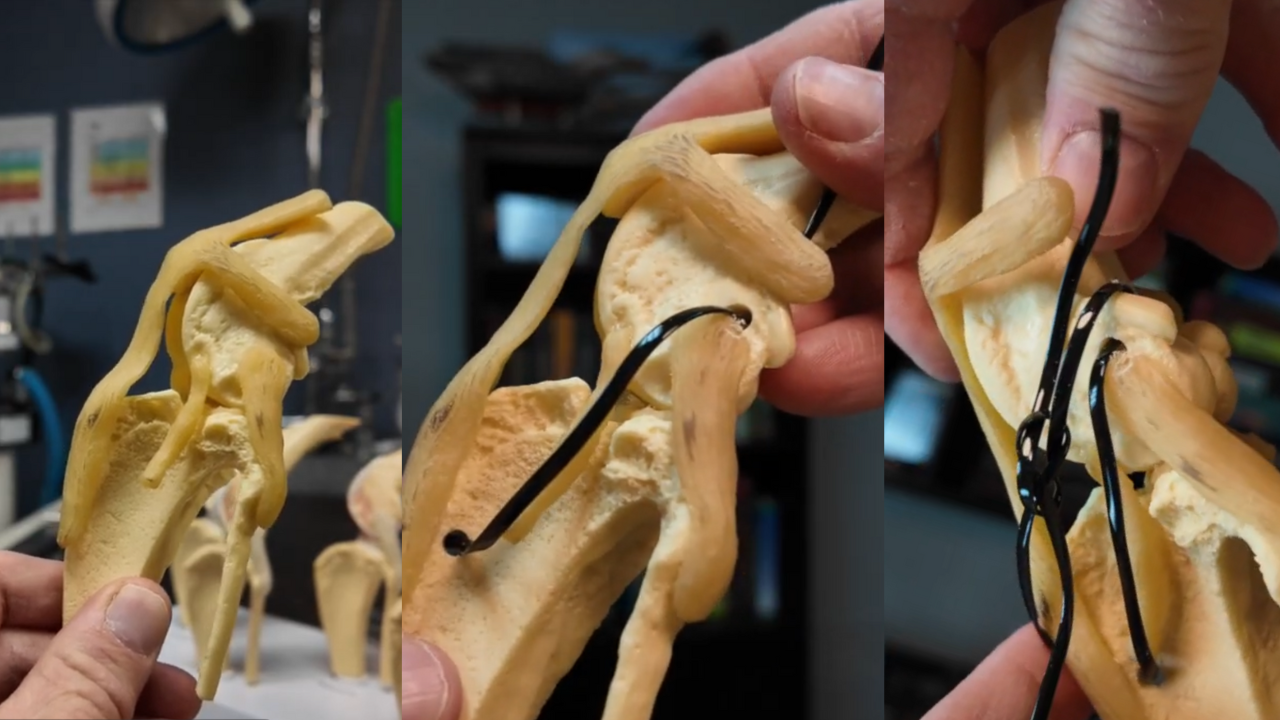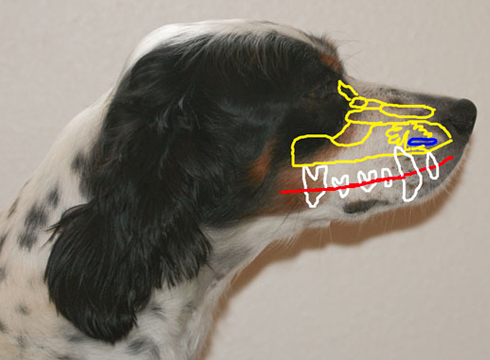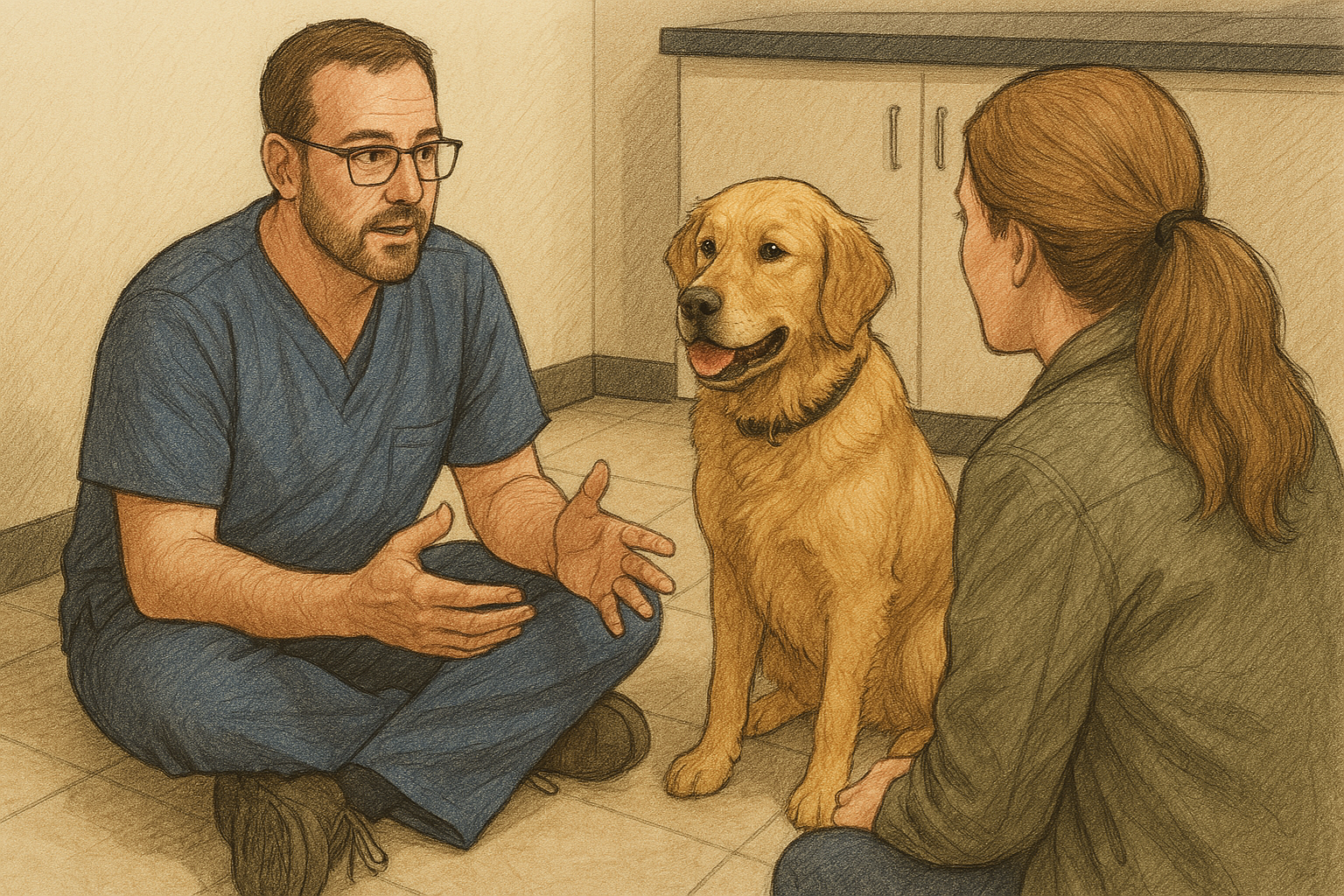In this blog post we are going to take a look at the extracapsular technique is a surgical approach for stabilizing cranial cruciate ligament (CCL) injuries in dogs. For much of my career, this was the most widely used technique by general practitioners and, consequently, the most common choice for the majority of dogs.
Variations of the Procedure
There are several variations of the extracapsular repair, often referred to by names such as the lateral suture technique or the “fishing line technique” (due to the use of a high-test monofilament suture). Some techniques involve using crimps instead of knots, and the tightrope technique, while performed under arthroscopic guidance, employs similar principles.
Historical Preference for Extracapsular Repair
For the first 10–15 years of my career, I often advocated for the extracapsular technique, even for athletic sporting dogs. Early on, I wasn’t impressed by the long-term outcomes of the TPLO (tibial plateau leveling osteotomy). Additionally, during my time at Iowa State, one of the surgeons was conducting research that supported the extracapsular procedure, even in comparisons with the TPLO. When weighing the risk-benefit analysis, cutting a bone in half—as required in a TPLO—for a potentially equivalent outcome didn’t seem justified.
Current Practice
Nowadays, the majority of my patients undergo the TPLO procedure. However, the extracapsular technique still has its place, particularly for:
- Smaller Dogs: Initially, I recommended TPLO for dogs over 50 pounds, while smaller dogs received the extracapsular repair. Over time, as I saw better TPLO outcomes, this weight threshold decreased to include spaniels around the 35-pound range. For very small dogs, such as those around 25 pounds, the extracapsular technique often remains a viable option, yielding satisfactory outcomes. I always pondered what method I would have chosen if my cocker Lily ever blew her cruciate…thankfully I never had to decide.
- Older, Less Active Dogs: In cases where a dog may no longer be able to work in the field but still needs stability and comfort, the extracapsular repair may be preferred. Some owners of dogs with a previous TPLO may even opt for the extracapsular technique for the second knee if circumstances—such as age, activity, or financial considerations—dictate a less invasive approach.
Financial Considerations
The cost of surgery is a significant factor for many pet owners. TPLO procedures have become increasingly expensive, often exceeding $5,000 even when performed by non-board certified veterinarians. Yes, I also find that crazy. In contrast, when we had a surgeon at our clinic the extracapsular repair roughly cost half that amount of a TPLO. While the TPLO is strongly recommended for dogs returning to athletic activity, the extracapsular technique remains a viable and more affordable option for many families.
We went through a period in the profession where some veterinarians would get to the point of making clients feel like the choices were TPLO or euthanasia and that just isn’t true. With most anything in life there are choices and some of those choices come with better potential outcomes than others but do know that there are choices. And while I’d strongly recommend the TPLO for any dog we were hoping to return to athletic function I also have seen a lot of dogs over the course of my early career that did just fine back out in the field with an extracap repair.
The Procedure
The extracapsular repair involves addressing the joint from the outside, as the name suggests. During surgery, the joint is explored to clean up problematic areas, inspect the meniscus, and perform a partial meniscectomy or release if necessary. Stabilization is achieved by:
- Drilling a hole through the tibia (in area of the shin).
- Passing a stabilizing monofilament suture through this hole and looping it behind the femur, anchoring it to tissue around the fabella (a small floating bone on the back of the femur).
- Securing the suture with a knot or crimp to mimic the stabilizing function of the cruciate ligament.
While the suture initially stabilizes the joint, long-term stability relies on the body’s formation of scar tissue. Healing typically takes 12–16 weeks, during which a rehabilitation program is crucial.
Potential Complications
- Suture Breakage: Larger dogs are at higher risk of breaking the suture due to the greater stress on the suture. This can occur immediately post-surgery or years later. I don’t want to jinx my future patients but of the dogs that we have had to take a broken suture out all have occurred far enough down the road that replacing the suture was not necessary and once the broken suture was removed the dogs were usually good to go. The removal is a pretty minimal procedure, usually only involving heavy sedation.
- Infection or Rejection: The presence of foreign material introduces a risk of infection or rejection. However, these complications are rare, with reported infection rates around 4% and overall complication rates near 7%. I would say in the practices I have worked, the rates are lower.
Success Rates and Considerations
While the extracapsular technique has lower reported success rates (in the low 80% range) compared to TPLO, I believe that choosing an experienced surgeon can significantly improve outcomes. This technique may not be ideal for athletic hunting dogs, but it remains a valuable option when considering factors such as age, size, and cost.
Conclusion
The extracapsular lateral suture technique remains a practical and effective option for certain dogs, particularly smaller or older ones. It is important to weigh all factors—including the dog’s size, activity level, and financial considerations—when deciding on the best surgical approach. In the next blog, we will delve into the TPLO procedure and my evolving opinions on its use.



